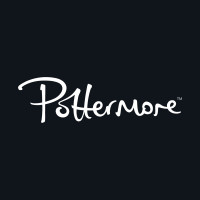She inhales, smiles to herself and smoothes out the top right edge of the page. My heart skips a beat when I realise what we’re looking at. It’s the wands.
We’re looking at 1920s wands. Newt’s wand. Tina’s wand. Queenie’s wand. The wand Colin Farrell used for swishing practice as his character, Graves. They’re all here on the page – beautiful, detailed illustrations for each of the main magical characters in Fantastic Beasts and Where to Find Them.
They’re so exquisite, I find myself stroking the paper while we speak, trying to coax them into three dimensions.
Molly is the junior concept designer on the film. Her first task for production designer Stuart Craig was to pluck details from J.K. Rowling’s screenplay and sketch up some wand options for the main characters. A total dream project, obviously. She’s practically Ollivander; if Ollivander was a twenty-first-century woman with Photoshop.
‘I know from the Harry books that the wizard has to have an affinity with the wand. It picks them,’ she says. ‘It’s a bit like people and their dogs. I feel like you can see traces of the wand in the wizard and the wizard in the wand. So we had to imagine the feel and the material of the wand as a good partnership with the character.’
‘This one has to be for Newt,’ I say, pointing to a modest wooden wand.
‘We wanted it to relate somehow to the animal kingdom,’ she tells me, ‘but we thought it was sort of inappropriate to give him anything that might have a trophy feel to it. We didn’t think he would be into that at all. The main part of this one is wood.’
‘Is this one Queenie’s?’ I ask, jabbing the table with my finger like I’m a contestant on some sort of impromptu ‘Guess the Wand’ game show. ‘That’s got to be the closest thing to a sexy wand I’ve ever seen. It can only belong to Queenie.’
‘That’s Queenie’s, yes,’ Molly says. ‘[Alison Sudol] did have a little bit of influence on hers because she really likes Art Deco. We put her taste in that and it really helped us get the time period, the era, into the design.
‘Whereas Tina’s wand is more functional, more understated. David [Yates] didn’t want it to be too jazzy because that wouldn’t suit Tina. We used an antique conductor’s baton for the basis of Graves’s wand.’
‘Have you held the real things? In your actual hands?’ I ask. It must be incredible for Molly to start the process of getting Stuart Craig’s vision on paper, taking it to director David Yates, feeding it through the whole art department, sending it off to props and getting it back in tangible form.
‘It’s fantastic. When I saw them for the first time, I just marvelled at the detail. When you’re designing, you don’t have endless time to rationalise all of the elements to actually make the thing, so when you finally get to touch it, you’re like “Oh, guys – you made it so good.” It’s just amazing to see.’
Molly starts to shuffle her other enormous pieces of paper. She’s got so much more to show me. All in good time…

